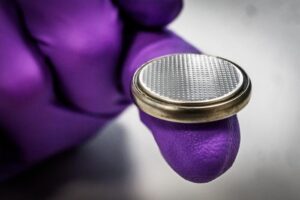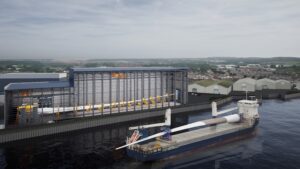Report: CIEEM air pollution and biodiveristy conference
Last Wednesday (March 4), Air Quality News travelled to Sheffield to attend the Chartered Institute of Ecology and Environmental Management (CIEEM) conference on the assessment and mitigation of air quality impacts on biodiversity.
Dutch Disaster
The first speaker of the day was Dick Bal from the Dutch Ministry of Agriculture, Nature and Food Quality.
The focus of his speech was on the Dutch nitrogen crisis.
Nitrogen is a key nutrient for plants, but also a major pollutant. The Netherlands became a nitrogen hotspot because it is a densely urbanised nation and Dutch farms contain four times more animal biomass per hectare than the EU average.
This started to lead to negative effects on biodiversity as plant biodiversity decreased as nitrogen loving grasses increased.
In 2015, the Netherlands introduced a nitrogen permit allowing construction if regional governments reduced nitrogen from other sectors.
However, this did not satisfy environmental groups who then sued the government, demanding that it deny construction permits for expanded animal operations near nature reserves.
The case ended in the court of justice of the European Union, who ruled against the government.
The Dutch high court then implemented a ruling to halt all permit applications. The ruling said the Dutch government must come up with a better system and long-term plan to reduce nitrogen emissions.
Ammonia
The next speaker of the day was Dr Ben Marner, from Air Quality Consultants, he discussed ammonia pollution from vehicles and the dangers of ignoring it.
The Euro standard for vehicles focuses on NO2 and not ammonia, but as Marner highlighted ammonia is a byproduct of emission controls to reduce NO2.
‘If we weren’t trying to reduce NO2 we wouldn’t have any ammonia,’ he said.
Ammonia is not currently included in Euro standard assessments, and according to Marner, Defra’s published emission factors for ammonia are likely to be under-predicted.
Dr David Kelleghan, a postgraduate researcher at the University College Dublin School of biosystems and food engineering continued to discuss ammonia pollution, but from agriculture, dairy farms and slurry spreading.
Kelleghan’s PhD research focused on improving the environmental assessments for agriculture ammonia in Ireland.
Since 2016, Ireland has exceeded its ceiling for ammonia and that is in part due to the number of cattle.
In Ireland, there is no assessment for cattle farming, and with poultry, they only need licencing if the farms have over 40,000 birds.
There are over 760 unlicensed farms, therefore the impact on ammonia pollution on the majority of poultry farms is not considered.
Kellaghan went into various poultry farms across Dublin to measure ammonia pollution in the surrounding area, his research highlighted that different types of buildings have different ventilation and this significantly alters the emissions.
He highlighted the need for a more considered monitoring and clear guidelines when it comes to agriculture and ammonia pollution.
Recovery
Dr Carly Stevens from Lancaster University discussed her research on the recovery of natural habitats that have been affected by nitrogen disposition.
Stevens has been conducting research at the Tadmore Moor experiment.
This experiment was initiated in 1986 when levels of nitrogen were added to the wetland and the vegetation was then surveyed annually.
This nitrogen disposition ceased in 1990 and 15 years later, Stevens went back to the site to assess the impact that this disposition has had and to see how the site is recovering.
Stevens stated that when she went back to the site there was still a visible impact on the landscape.
Her key message was that rapid recovery from nitrogen pollution is highly unlikely.
Richard Gould gave the final speech of the day, Gould has been working for the Environment Agency for 20 years, within the Monitoring & Assessment team and for the past year, he has been working on options for delivering the industrial aspects of the 2019 Clean Air Strategy, focusing specifically on ammonia emissions.
Gould stated that we need to reduce ammonia emissions nationally by taking a strategic approach and aligning thresholds rather than focusing on individual sectors.
Photo Credit – Pixabay















